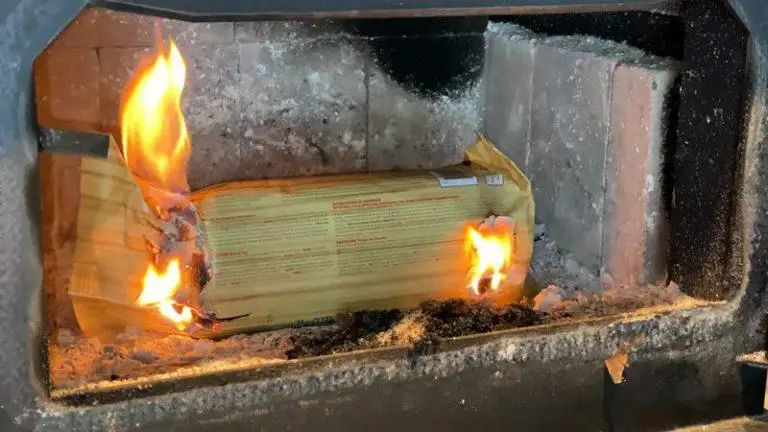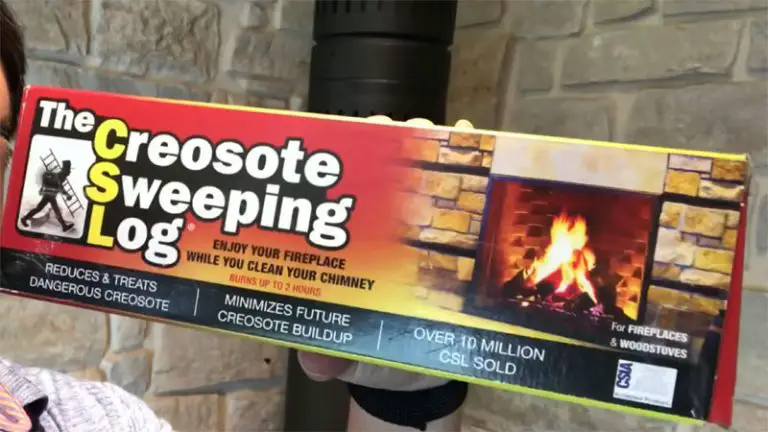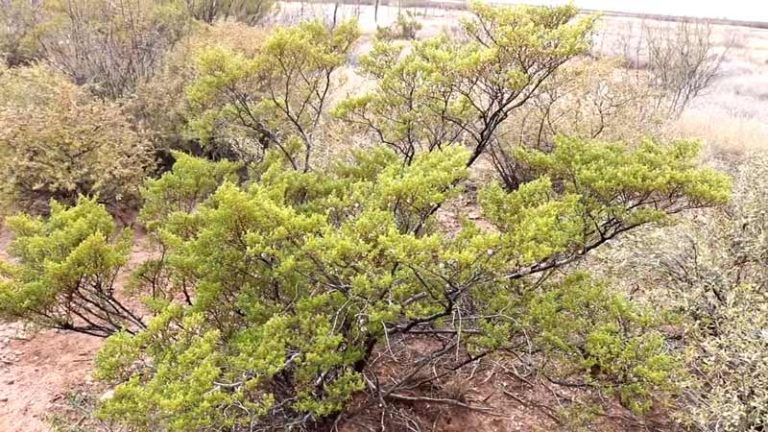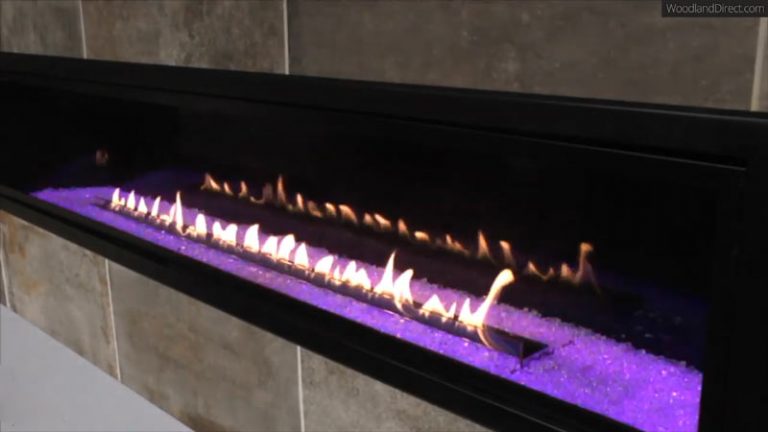What Is In A Creosote Sweeping Log

After a storm, be sure to sweep away any debris or creosote covering the ground outside your home. If you live in an area with standing water after rainstorms, try to remove it as soon as possible so that mold doesn’t form.
Keep your fireplace clean and free of ashes; they can accumulate over time and create health hazards around your home. Remove all branches from trees within 500 feet of your property’s boundaries to keep them from falling onto homes and cars during storms or windy conditions.
Maintain a regular routine for removing unused lumber from around your house- this will help prevent potential damage caused by insects or animals.
You'll Learn About
What Is In A Creosote Sweeping Log?
If you have a property that has been affected by Creosote and Tar, it is important to take action right away. Sweep the area around your home to remove any debris or lose materials that may be hiding creosote and tar residue.
Make sure there is no standing water on the ground – this can act as a breeding ground for mosquitoes and other insects which can spread disease in your community. Maintain a clean fireplace – if ashes accumulate, they can contain toxins that will harm both people and wildlife if left unattended.
You should also keep trees away from your home to help prevent them from falling onto your property, damaging it in the process, as well as depositing branches onto roofs or walls nearby- this is often an easy job when done correctly.
Help to dry out the creosote and tar
A creosote sweeping log is an important part of any restoration project. It helps actively help to dry out the creosote and tar that may have built up over time on wood surfaces. This will reduce the amount of moisture that can cause further damage to the wood.
The sweepings from creosote- and tar-covered roofs can be very beneficial if you want to try and dry out the creosote and tar. The sweepings contain minerals that actively help to remove these materials from the surface.
This process can take time, but it is important that you continue doing this in order to prevent future damage from occurring.
Reduces the risk of fire
Sweeping logs are an effective way to reduce the risk of fire, as they trap and contain any sparks that may fly. Creosote sweeping logs come in a variety of sizes and shapes, so you can find one that is perfect for your needs.
They also come with special features like rubber tips on the ends to help avoid making too much noise when sweeping. If you live in a high-risk area, it is important to buy a sweeping log that meets safety standards set by your municipality or agency.
You should store your sweeping out of reach of children and pets, as they can be harmful if ingested or gotten caught in the bristles. To keep your log working at its best, make sure you clean it regularly using either water or soap – never use ammonia.
If something does happen while your log is being used–like there’s a malfunctioning appliance–never try to fix it yourself; call an expert instead.
Sweep the Creosote and Tar Concrete
Creosote and tar are dangerous if they fall on your property or come into contact with you. A sweeping log will help to remove the creosote and tar from around your home before it can reach you.
Sweep the area regularly to prevent a build-up of these materials that could be hazardous to your health. You can find sweepers made specifically for removing creosote and tar at most hardware stores, or you may use a broom handle as well.
Make sure children, pets, and yourself are safely away from the area while sweeping so that there is no danger of exposure to these materials.
Make Sure There is No Standing Water
Creosote sweeping logs are one way to avoid standing water on the ground. They collect rainwater, snow, and ice which can lead to flooding if not drained properly.
Make sure there is no standing water on the ground before using a creosote sweeping log as it will cause damage. Creosote sweeping logs must be maintained regularly in order to keep them effective and free of debris buildup that can harm your property or garden plants.
A creosote sweeping log should never be used if the surface has frozen over as this could break down the protective coating on the log and result in potential hazards for you and your family.
Maintain a Clean Fireplace
Sweep the ashes and debris into a pile at least twice a week to keep your fireplace clean and free of soot or cinders. If there is any grease or oil on the logs, use a creosote sweeping log to remove it before starting the fire each time you light it.
Keep all flammable materials away from the fireplace—this includes newspapers, leaves, plastics, etc.—and dispose of them properly after using the fireplace. Clean up any spills immediately; do not leave liquid near logs that can ignite easily in case of an emergency evacuation.
Remember: A clean and well-maintained fireplace means pleasant firesides for years to come.
Keep Trees Away From Your Home
Creosote sweeping logs are a great way to keep trees and other plants away from your home while keeping your property clean. These logs have been designed specifically to collect leaves, branches, and other debris quickly and easily.
They come in different sizes so that you can find the perfect one for your needs. You can place them on either side of your home or across it, depending on how much coverage you need.
Remove Unused Lumber from your Property Regularly
Sweep the debris off of your property regularly to prevent accumulation and ensure that you have a clean area to work in. Use a creosote sweeping log to dispose of lumber, branches, leaves, and other large pieces away from your home.
Place the log at least 20 feet from any structure or occupied area before starting the sweep. Move the log around as needed so that all parts of your property are covered evenly Dispose of lumber smaller than 3 inches in diameter using a shovel or broom.
What is a Creosote Sweeping Log made of?
Creosote Sweeping Logs are made of organic compounds which makes them environmentally friendly, as well as helpful in reducing harmful smoke and creosote fumes from your fireplace.
If not cleaned up properly, the by-product of burning wood – creosote – can be harmful to your home if left unchecked; a Creosote Sweeping Log can easily remove these deposits from the firebox.
Being able to easily remove a Creosote Sweeping Log from your fireplace is an added convenience, making it easy to maintain cleanliness and safety while using your backyard grill or stovetop burner.
Keep your backyard BBQ area looking its best with a set of fresh creosote Sweepi logs today.
Do creosote sweeping logs really work?
Creosote sweeping logs are a common technique used by mechanics to identify and correct problems with the engine. They consist of a long, thin piece of wood with a metal detector attached at one end.
The sweep is rotated across the engine while it’s running, detecting any signs of creosote or another build-up.
- Sweeping with a chimney sweep log won’t remove creosote. Creosote is created when wood burns and it forms in any fireplace flue. This sticky, black residue can be difficult to clean and can cause your fireplace to become smokey and unsightly.
- Sweep logs are not certified for use on pre-fired wood-burning fires. The type of fire that you have will impact the effectiveness of a sweep log – if your fire is fueled by embers rather than sticks, then using a sweep log may not work as well because embers tend to leave more residue behind.
- You’ll likely need to do more than just swipe the chimney with an ASweep log – you’ll also want to use a broom or mop to help spread the debris around and get rid of all traces of creosote residue from your fireplace flue.
- Chimney sweeps aren’t effective at cleaning the entire inside surface of a fireplace – they’re designed only for sweeping dirt, ash, and other material off the top layer of bricks or stonework near the roofline. If there are still residues left after using a sweeping, you may need professional cleaning services.
- Sweeping with an ASweep logger isn’t always necessary – often times simply rinsing down your chimney once per year will suffice in removing accumulated build-up from fuel combustion.
Are creosote logs safe to breathe?
Creosote logs are a type of wood that has been treated with a poisonous chemical called creosote. Creosote is used to protect the log from moisture and decay, but it can also be harmful if it gets into the air.
The main concern with creosote logs is respiratory health. If you breathe in large amounts of this chemical, it can cause asthma attacks, lung cancer, and other respiratory problems.
Creosote is a Toxic Material
Creosote is a type of tar that originates from wood fires. It can be very dangerous if it gets into the air, as it can cause respiratory irritation. The smoke from a log in your fireplace can cause this issue, and you should avoid breathing in the gas fumes produced by burning creosote logs.
Can Cause Respiratory Irritation
The smoke from a burning log contains harmful chemicals such as carbon dioxide and sulfur dioxide, which are both known to irritate your lungs. If you’re concerned about breathing these gases, you should use an open fire or burn only seasoned logs to avoid inhaling any potential health risks.
Can Safely use a Log in Your Fireplace
Using untreated lumber in your fireplace is not recommended, but using treated lumber (such as those made with creosote) is safe for indoor usage provided that the material meets all safety requirements set out by the government agency responsible for regulating consumer products like woodburning stoves and fireplaces.
In fact, according to most experts, treated timber even offers some environmental benefits over traditional forms of heating due to its lower emissions levels.
Do chimney sweeps use chemicals?
Chimney sweeps use a lot of chemicals to clean the inside of your chimney. Some of these chemicals can be harmful if they’re breathed in, so it’s important to know what they are and how much exposure you might have.
Cleaned using chemicals and sweeping
Professional sweeps use a variety of chemicals to clean chimneys. These chemical products can include creosote, tar, coal ash, oil of turpentine, and pentachlorophenol. The most common type of sweep uses creosote which is a petroleum-based product that can damage your chimney if not used properly.
Before using any kind of cleaning product on your chimney, be sure to read the manufacturer’s instructions carefully and follow them closely.
Chemical products used by professional sweeps
- Creosote
- Tar
- Coal ash
- Oil of turpentine
- Pentachlorophenol
Some chemical products used by professional sweeps can be dangerous if not used correctly. For example, the oil of turpentine is an organic solvent that can cause skin irritations and even blindness when it gets into contact with eyesight-sensitive areas like the cornea. Pentachlorophenol is also an organic compound that has been linked to cancer in humans.
Follow Proper Instructions
It is important to read the manufacturer’s instructions before using any type of cleaner on your chimney because improper usage could lead to serious safety risks. Furthermore, always wear protective gear while working around toxic chemicals as these cleaners do.
The creosote removal logs work fine generally.
To Recap
Creosote sweeping logs are made from a combination of woodchips, wax, and tar. They are used to clean floors and other surfaces where grease or oil may be present.
Creosote is also a type of coal tar, which means it contains high levels of cancer-causing agents.
Also Read – Does a Tankless Water Heater Need a GFCI Breaker?






